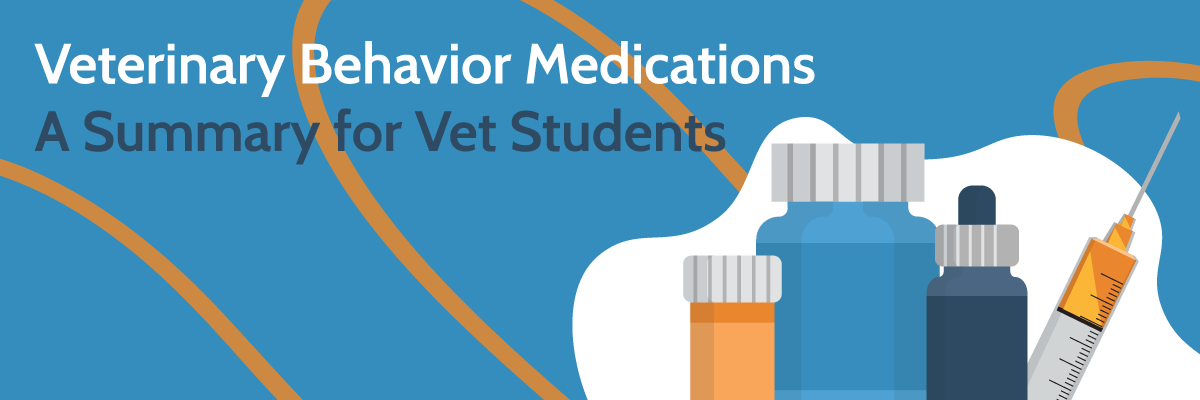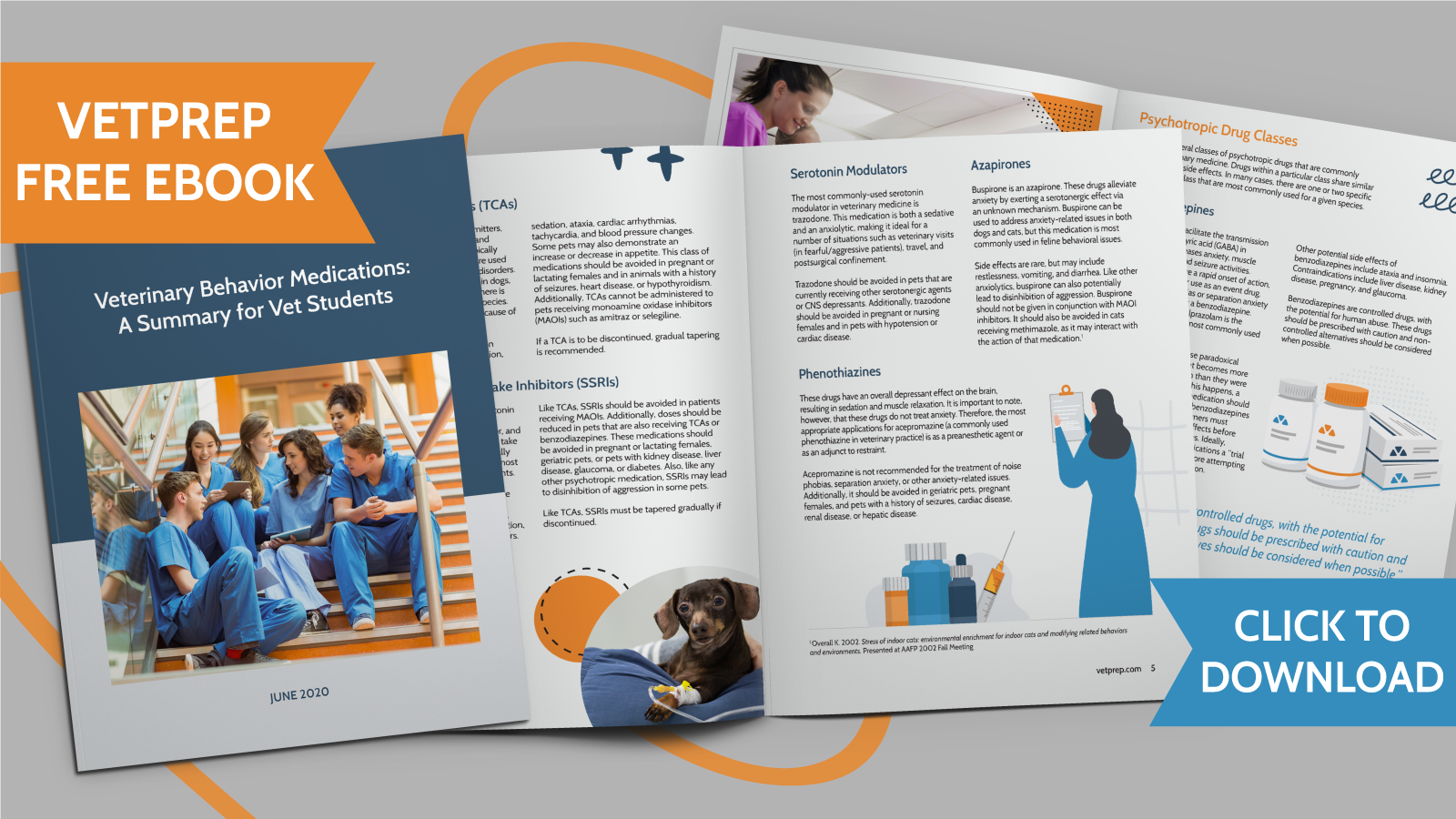
As you have surely realized by now, many animals do not want to be at the veterinary clinic! Unfortunately, this anxiety can have serious effects. Not only are terrified pets miserable, but they’re also more likely to injure you, your staff, or even themselves.
Additionally, pets that are stressed are difficult to examine thoroughly, meaning that their anxiety can adversely impact the quality of care that they receive. Making veterinary visits less stressful benefits everyone - you, your team, your patients, and your clients.
Low-Stress Handling® and The Fear Free® Movement
In 2009, Dr. Sophia Yin published a book titled Low Stress Handling, Restraint and Behavior Modification of Dogs and Cats: Techniques for Developing Patients Who Love Their Visits. As its title suggests, this book was entirely focused on techniques to minimize stress in small animal veterinary patients. In conjunction with her book, Dr. Yin offered a number of courses for veterinarians and veterinary team members. Although Dr. Yin died in 2014, these courses are still available through Low Stress Handling® University.1 In addition to individual courses, a certification program for veterinarians and veterinary team members is also available.
Fear Free® is a separate program, developed in 2016, that also seeks to reduce stress in veterinary patients.2 Like Low Stress Handling®, it emphasizes working with canine and feline patients in ways that decrease anxiety. Fear Free® offers certifications for veterinarians, veterinary team members, and entire practices, all of which serve to educate these professionals and advertise the use of these techniques to the community.
While the courses and certification available through either program can serve a valuable role in educating veterinarians and team members, the programs have also helped to introduce methods that every veterinarian or team member can use in practice.
10 Tips for Creating Positive Veterinary Visits
1. Use a lot of treats
You may have heard the statement “the way to a man’s heart is through his stomach.” Well, the same is true for pets! Most dogs, and even many cats, are happier while eating a tasty treat. Encourage your clients to withhold breakfast on the day of their appointment, so your patient is hungry. Keep a variety of treats on hand and take the time to learn (through trial and error) your patients’ favorites. Having a vet tech give treats as you perform your exam and administer vaccines can go a long way towards decreasing patient stress.
2. Encourage “social visits”
It’s no surprise that many pets are fearful of the veterinarian. Every time they come through our doors, they endure all sorts of offenses: rectal thermometers, awkward exams, needle pricks, etc. Encourage your dog owners to bring their dogs in just to visit. The dog can come in the lobby (or even an exam room, if it’s not too busy) for some belly rubs and treats, then go home. This teaches the dog that not every vet visit is an unpleasant experience!
3. Teach your owners how to properly bring their pet to the clinic
Cat owners often struggle with getting their cat into the carrier. The ensuing rodeo almost guarantees that your feline patients are stressed before they even enter your parking lot. Teach your clients to acclimate their cat to the carrier, using treats, pheromones, and other positive techniques. Minimizing pre-visit stress will ensure that your patients arrive calm and relaxed.
4. Separate dogs and cats
Cats often become anxious by the presence of dogs. If possible, try to keep dogs and cats separate. Designate separate areas of the lobby, so that cats aren’t made more worried by dogs sniffing at their carrier. Use separate exam rooms, to minimize your feline patients’ exposure to dog odors. In some practices, dogs and cats are even separated for hospitalization.
5. Minimize noise
Veterinary clinics are often loud, due to the presence of barking dogs. Attempt to control noise when possible. Examine cats in the exam rooms that are farthest from your kennel. Ensure that interior doors remain closed, to block sound. Minimizing noise will decrease stress for both patients and employees.
6. Adjust to the pet’s comfort level
While many of us learned one “right” way to restrain a dog or cat, some patients do not like to be restrained in that manner. Be flexible. If a dog is more tolerant of an exam while laying on her back, and you can do so safely, roll with it. If a cat prefers to be examined while remaining in his carrier, do the best exam that you can with the carrier top removed and the pet resting in his carrier. Performing your exam in a method that is comfortable for the pet will often give you more accurate findings than fighting the pet into the “right” position for restraint.
7. Re-evaluate the use of the exam table
Although this isn’t always convenient or practical, many pets are less stressed on the floor than they are on a cold exam table. If you are physically able and the pet is amenable, consider trying to perform your exam while sitting on the floor with the pet. If you must use an exam table, place a no-skid mat on the table before starting your exam.
8. Use calming pheromones
Calming pheromones, such as Feliway® and Adaptil®, can decrease patient stress. Diffusers placed in exam rooms, treatment areas, and kennel areas can be beneficial. If your clinic does not use diffusers, even spraying your scrubs with pheromones before entering the room can help decrease anxiety in your patients.
9. Use drugs as necessary
For some pets, all of the interventions in the world are not enough to ensure a stress-free experience. In these pets, consider drugs. Trazodone in dogs and gabapentin in cats can significantly reduce anxiety associated with vet visits, when used appropriately. If a pet is anxious even with those meds on board, reach for injectable drugs instead of fighting the pet.
10. Stay calm and regroup if needed
When you’re double-booked back to back all day long, there can be a temptation to just wrestle the pet into submission and get the visit over with. While that might work in the short term, it will ultimately result in a pet that is even more difficult to handle at future visits. Don’t hesitate to step back, take a deep breath, and regroup. You may need to tell the owner “this isn’t working, so let’s reschedule for another day and do XYZ differently.”
While your ability to create an entirely stress-free environment for your patients may be limited (depending on your practice), focus on controlling what you can to ensure that your patients have the best experience possible! This will improve the quality of both your patients’ lives and your own, while also ensuring that your clients continue bringing their pets in for the best possible care.
References
- Low Stress Handling® University. Retrieved from https://lowstresshandling.com/
- What is Fear Free®? Retrieved from https://fearfreepets.com/about/what-is-fear-free/



